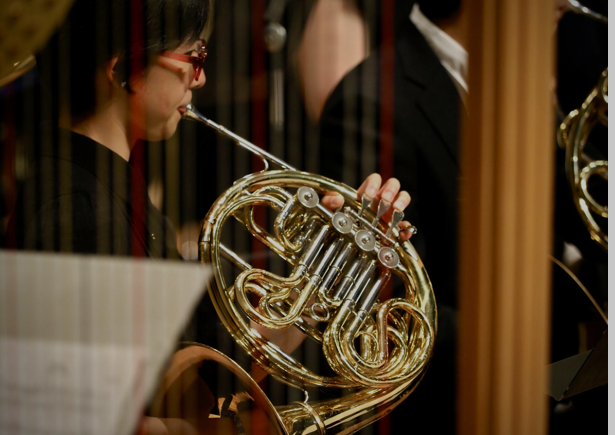Business
Beginner’s Guide to Playing and Caring for the French Horn

The French Horn, celebrated for its rich and warm timbre, has captured the hearts of many musicians. Whether you’re considering diving into the world of brass instruments or are already a budding musician, understanding the French Horn is essential.
But what makes this instrument so unique? It’s an intricate blend of design, technique, and a touch of artistry. In this beginner’s guide, you’ll learn the basics of playing and caring for your French Horn, ensuring that you start your musical journey on a high note.
Understanding the Anatomy of the French Horn
The French Horn is distinct due to its circular shape and wide bell. It typically consists of a lengthy tubing coiled into a spiral, which helps in producing its characteristic sound.
The instrumental design allows for a range of dynamics and tonal qualities. To grasp how the French Horn functions, let’s break down its components:
Bell
Imagine a megaphone, amplifying sound waves to reach a larger audience. Similarly, the large flared end of a musical instrument, such as a trumpet or French horn, directs the sound, affecting its volume and projection.
The bell’s shape and size play a crucial role in shaping the sound, allowing it to resonate and fill the air. For instance, a larger bell can produce a louder, more dramatic sound, while a smaller bell might produce a softer, more intimate tone.
Tubing
Picture a pipe organ, with its numerous pipes of varying lengths producing a wide range of notes. The length of tubing in a musical instrument has a similar effect, influencing the pitch produced.
Longer tubes produce lower notes, as the air has to travel farther, slowing down the vibrations and resulting in a deeper sound. Conversely, shorter tubes produce higher notes, as the air travels faster, creating faster vibrations and a brighter tone. This is why instruments like the French horn and tuba have longer tubing, producing those characteristic low notes.
Valves
Think of air traffic control, directing planes to different runways to avoid congestion. Similarly, valves in a musical instrument allow players to alter the pitch by changing the airflow within the instrument.
These buttons redirect the air, allowing the musician to play different notes and create complex melodies. By opening and closing different valves, players can change the pitch, tone, and dynamics of the music, adding expression and emotion to the performance.
Getting Started: First Steps in Playing the French Horn
Before you can serenade an audience, mastering the basics is essential. Here are some tips for beginners:
Embouchure and Breathing
Your embouchure – the way you shape your mouth and lips – plays a crucial role in producing a clear tone. Start by forming your lips together and buzzing into the mouthpiece. Focus on a steady airflow, as this helps in controlling your sound. Breathing deeply and from your diaphragm will support your playing and enhance your endurance.
Posture and Hand Positioning
Good posture is vital when playing the French Horn. Stand or sit up straight, ensuring that your shoulders are relaxed. Your left hand controls the valves, while your right hand helps with sound modulation. Experiment with hand positioning; some players keep it inside the bell to adjust the tone and volume.
Choosing Your First French Horn
When selecting a first French Horn instrument, several considerations will enhance your experience.
Deciding between a new or used French Horn can impact your budget. New instruments come with warranties, but used ones can be more affordable. Ensure that any used horn is checked for quality and functionality.
Most French Horns are made from brass, but the quality of the brass and the attention to craftsmanship can vary. Look for instruments that offer a good balance between weight and sound projection.
Essential Maintenance Tips for the French Horn
Proper maintenance will prolong the lifespan of your French Horn and enhance its playing capabilities. Here are some practical maintenance tasks:
Establish a cleaning routine to keep the instrument in good condition. Regularly wipe down the exterior with a soft cloth. Monthly, use a snake brush to clean the inside of the tubing for optimal airflow.
Applying valve oil to the moving parts keeps your French Horn responsive. Tuning slides should be checked regularly to adjust pitch, ensuring your horn sounds its best.
Advanced Techniques and Resources for Progression
As you advance in your French Horn journey, consider incorporating various techniques and resources. Listening to professional musicians can offer insights into different playing styles. Imitating their sound and techniques can help refine your skills and broaden your musical understanding.
Understanding music theory can drastically improve your playing. Familiarize yourself with basic scales, chord structures, and key signatures to foster a deeper connection to the music.
Mastering Challenges While Playing the French Horn
Even with practice, you may face challenges while playing. Here are some common hurdles and how to overcome them:
Pitch Control
Achieving accurate pitch can be tricky, especially with such a complex instrument. Focus on ear training by using a tuner to find the correct pitches. Regular practice of scales will also help embed pitch memory.
Breath Support
Many beginners struggle with sustaining notes. Strengthening your lung capacity with breathing exercises can improve your overall playing strength. Techniques such as “pursed lips” help control airflow, aiding in longer tone production.
Community and Support for French Horn Players
Engagement with others can greatly enhance your learning experience. Seek out local bands or orchestras that welcome beginners. Joining a group boosts your confidence and helps you learn from skilled musicians.
Numerous online communities exist where you can ask questions, find sheet music, and share experiences. Websites like forums and social media groups are excellent for networking with other French Horn enthusiasts.
Choosing Additional Equipment for Your French Horn
To complement your playing, consider obtaining essential accessories. A high-quality case protects your investment. Consider purchasing additional valve oil, cleaning kits, and even a metronome to assist with practice.
Invest in method books that are designed specifically for French Horn players. Look for pieces that challenge you and help build your repertoire and technique.
Embarking on Your French Horn Journey
Starting your journey with the French Horn can be incredibly fulfilling. By grasping its fundamental aspects, practicing consistently, and connecting with other musicians, you’ll not only enhance your skills but create lasting memories. Embrace the challenge and enjoy the beautiful music you can create with your French Horn instrument!
For more helpful tips, check out the rest of our site today.
-

 Celebrity1 year ago
Celebrity1 year agoWho Is Jennifer Rauchet?: All You Need To Know About Pete Hegseth’s Wife
-

 Celebrity1 year ago
Celebrity1 year agoWho Is Mindy Jennings?: All You Need To Know About Ken Jennings Wife
-

 Celebrity1 year ago
Celebrity1 year agoWho Is Enrica Cenzatti?: The Untold Story of Andrea Bocelli’s Ex-Wife
-

 Celebrity1 year ago
Celebrity1 year agoWho Is Klarissa Munz: The Untold Story of Freddie Highmore’s Wife
















